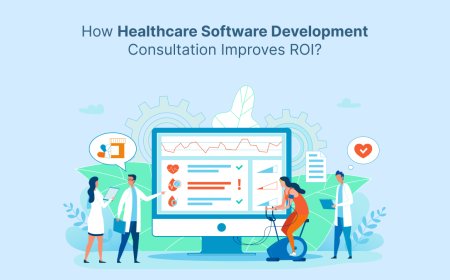How to Build an XDR Strategy from the Ground Up
Extended Detection and Response (XDR) is a security architecture that integrates data across endpoints, networks, cloud workloads, and identities to deliver centralized threat detection, investigation, and response.

In todays complex cybersecurity landscape, building a modern threat detection and response strategy is no longer optionalits a necessity. Traditional siloed tools like SIEM, EDR, and NDR offer value, but Extended Detection and Response (XDR) brings it all together, providing a unified platform that delivers deeper visibility, automated response, and reduced operational complexity.
Whether you're just starting your cybersecurity journey or looking to evolve beyond legacy tools, this guide will walk you through how to build an XDR strategy from the ground up.
What is XDR?
Extended Detection and Response (XDR) is a security architecture that integrates data across endpoints, networks, cloud workloads, and identities to deliver centralized threat detection, investigation, and response. Unlike point solutions, XDR provides a holistic view of threats and automates key security functions to improve mean time to detect (MTTD) and respond (MTTR).
Why Start with XDR?
Before diving into the how, its important to understand the why:
-
Unified visibility: Correlates data from various sources for a complete threat picture.
-
Improved detection: Detects multi-stage attacks that evade traditional defenses.
-
Faster response: Enables automated, cross-domain response actions.
-
Reduced complexity: Replaces multiple dashboards and manual workflows with a cohesive platform.
-
Cost efficiency: Improves ROI by reducing the need for multiple disjointed tools.
Step-by-Step Guide to Building an XDR Strategy
1. Assess Your Current Security Posture
Start with a comprehensive assessment:
-
Inventory your existing tools: EDR, SIEM, NDR, firewalls, identity solutions, etc.
-
Identify visibility gaps: Are you blind in the cloud? At endpoints? On lateral movement?
-
Analyze incident response workflows: How long does it take to detect, triage, and respond?
This baseline helps define your requirements for an XDR platform and highlights integration points.
2.Define Business and Security Objectives
Align your XDR strategy with both security and business goals:
-
Protect critical assets and data
-
Meet regulatory compliance (e.g., GDPR, HIPAA, NIST)
-
Reduce operational overhead
-
Improve detection of specific threats (e.g., ransomware, insider threats)
Clearly defined objectives will guide your implementation and measure success.
3.Choose the Right XDR Approach: Native vs Open
There are two primary XDR models:
-
Native XDR: Delivered by a single vendor with tight integration across their toolset.
-
Pros: Simpler deployment, faster time to value
-
Cons: Vendor lock-in, limited third-party integrations
-
-
Open XDR: Integrates data from best-of-breed solutions across multiple vendors.
-
Pros: Flexibility, adaptability to your existing stack
-
Cons: Requires more customization and integration effort
-
Choose the model that aligns with your current stack and future goals.
4.Prioritize Data Sources for Integration
XDR is only as powerful as the data it ingests. Start by integrating high-value telemetry:
-
Cloud and workload telemetry
-
Identity and access data (IAM, Active Directory, SSO)
-
Threat intelligence feeds
-
Email and collaboration platforms
The more context you have, the more accurate your detections will be.
5.Establish Detection Use Cases
Now, define use cases based on real-world threats:
-
Lateral movement across hybrid environments
-
Credential theft and privilege escalation
-
Suspicious login activity across geographies
-
Malware or ransomware propagation
-
Cloud misconfigurations and abuse
Your XDR should be able to correlate across domains to uncover these attack chains.
6.Build Automated Response Playbooks
A key advantage of XDR is automated response. Create playbooks that trigger based on risk level or alert type:
-
Isolate an infected endpoint
-
Disable a compromised user account
-
Block malicious IPs or domains at the firewall
-
Initiate forensic data collection
-
Open a ticket or send notification to the SOC
Start small with a few high-confidence actions and scale automation as trust builds.
7.Train Your SOC Analysts
XDR is not a silver bulletit amplifies the capabilities of your team. Upskill your security operations center (SOC):
-
Provide training on the XDR dashboard, analytics, and playbooks
-
Conduct red team/blue team simulations to test workflows
-
Use threat hunting exercises to build familiarity with telemetry
Empowered analysts plus smart tooling equals better security outcomes.
8.Measure, Monitor, and Improve
Success with XDR is a journey, not a one-time deployment. Track KPIs like:
-
Mean Time to Detect (MTTD)
-
Mean Time to Respond (MTTR)
-
Number of false positives
-
Coverage across environments
-
Analyst productivity gains
Use these insights to refine detection rules, update playbooks, and optimize performance.
Common Pitfalls to Avoid
-
Overloading the system with too much data too soon: Start with core data sources.
-
Ignoring integrations: Without strong API and log compatibility, XDR becomes another silo.
-
Over-automating response actions: Always include human oversight for critical systems.
-
Failing to involve the business: XDR should align with risk tolerance and operational priorities.
Final Thoughts
Building an XDR strategy from the ground up doesnt have to be overwhelming. By taking a phased, goal-oriented approach, you can modernize your security operations with confidence. Whether youre defending endpoints, cloud, or hybrid networks, XDR equips your organization with the visibility, automation, and intelligence needed to stay ahead of evolving threats.
Invest the time upfront to understand your needs, choose the right approach, and empower your teamand your XDR journey will pay dividends for years to come.






































